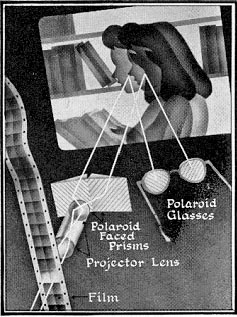Classic WORDS ABOUT 3D
U.S. Camera & Travel- January 1966
(from "3-D Updated" by Paul Farber)
"And so if your inclination is to champion lost causes, the case of stereo photography is ready-made for you. This lost pup, with us since the very beginnings of photography, continues to occupy a third-rate position in the photographic scheme of things. However, its intrinsic beauty, coupled with the fact that no other process can approach it for sheer realism, makes stereo a perennial favorite that will never quite fully leave the photographic scene; but it will never attain the pinnacle of acceptance that other photo processes have, and that's the pity of it all- it really is one beautiful way to present a photograph."
Underwood Travel System- The Business Side- 1908
Toning with pure gold
"The work of toning Underwood stereographs is done with the use of pure gold in the toning baths. The result of the great expense of toning with gold is that the stereographs thus treated present beautifully true and artistic warm gradations of tone, giving sharp contrasts where such contrasts exist in nature, and following nature also where she leads, by exquisite, almost imperceptible degrees of difference between light and shade."
TIME Magazine- December 7, 1942
Three-Dimension Movies?
It takes a sharp, experienced eye to read an aerial photograph, locate targets, measure bomb damage. The picture is flat, looks unnatural because the camera has only one eye and cannot register distance, depth, or solid shape. The third dimension can be added only by double vision, each eye having a slightly different angle on the scene. Such photographs have long been made by double cameras with lenses as far apart as are human eyes. But the production of motion pictures in three dimensions has lagged.
 |
| TIME Diagram by James Cutter |
Exaggeration is also possible. For aerial mapping a high-flying plane may shoot the same terrain from points a hundred feet or more apart, giving a range-finder effect as if seen by some fantastic bird whose eyes are that distance apart. When such pictures are viewed by human eyes, less than three inches apart, the effect is one of foreshortening—as if seen from a height of a few hundred feet. Thus reconnaissance has a superb new tool.
For movies one major difficulty remains. All objects must be in focus, no matter what their distance from the camera. This makes the use of large "fast" lenses impossible because such a lens can focus only for one definite distance. With small lenses for universal focus the light must be intense or else the exposure must be too long for motion-picture use.
Polaroid Corp. has an even more erudite scheme which will make use of the full standard-screen size and shape, will require no accessory beam splitter or double projector. In the vectograph. a Polaroid patent, the two pictures, one for each eye, are printed over each other on the same photographic film or paper. Incorporated with them is the polarizing material. When viewed with Polaroid glasses the picture is fully three-dimensional in ordinary light. When thrown on a screen from an ordinary projector the pictures are automatically polarized by the film, thus need only the viewing glasses.
Great unexplored field still ahead: television in three dimensions.